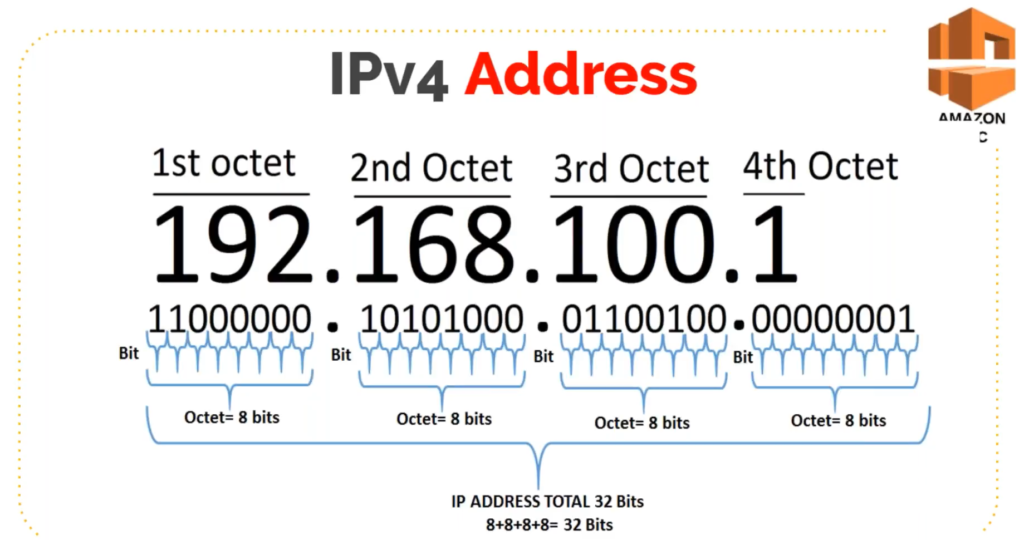Before we jump further into VPC, it is important for us to understand the concept of IPv4. IPv6 is also available, but understanding the VPC would be sufficient from IPv4.

IP is the decimal representation of the binary numbers.
IPv4 range starts from 0.0.0.0 to 255.255.255.255
IP’s are divided in classes. There are 2 type of classes available: public IP’s and private IP’s
Public IP’s are managed by ISP and there are ranges available for it. To understand private IP’s we need to get the range of the private IP’s. Private IP ranges from class A to class E. Class D and class E are for multicasting and research. In this blog we will have a look at the private IP’s from class A to class C.
Ranges:
Class A: 10.0.0.0 to 10.255.255.255
Class B: 172.16.0.0 to 172.31.255.255
Class C: 192.168.0.0 to 192.168.255.255
Classful Subnet Mask
What is this ? If you check the IP of your system you will notice something written like 255.0.0.0 or 255.255.0.0 or 255.255.255.0
Subnet Mask is used along with the IP’s and gives the information on first IP in the network, last IP in the network, broadcast IP, network address and possible gateway IP.
Let’s take an example here to understand this in detail. For instance let’s assume my IP is 192.168.1.20 with subnet as 255.255.255.0. This will imply that first 3 octets of my IP are occupied. Therefore my network will start from 192.168.1.0 to 192.168.1.255 where
192.168.1.0 is known as Network Address(reserved)
192.168.1.255 is known as Broadcast Address(reserved)
192.168.1.1 is known as Gateway IP(recommended)
192.168.1.2 to 192.168.1.254 are the usable IP’s
In recent times we do not provide the subnet mask. Instead of using the subnet mask we use CIDR notation. In CIDR notation we convert the subnet mask to its binary form.
255.0.0.0 => /8
255.255.255.0 => /24 and so on.
